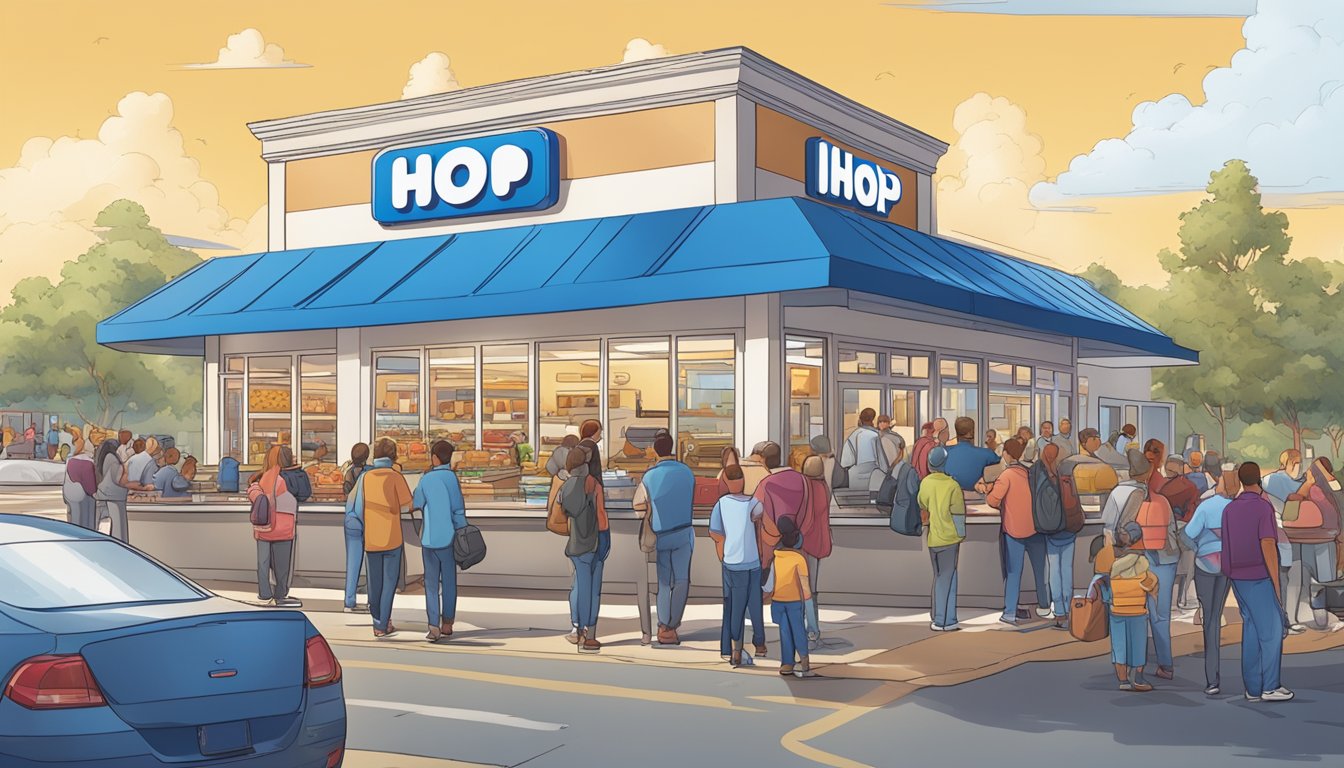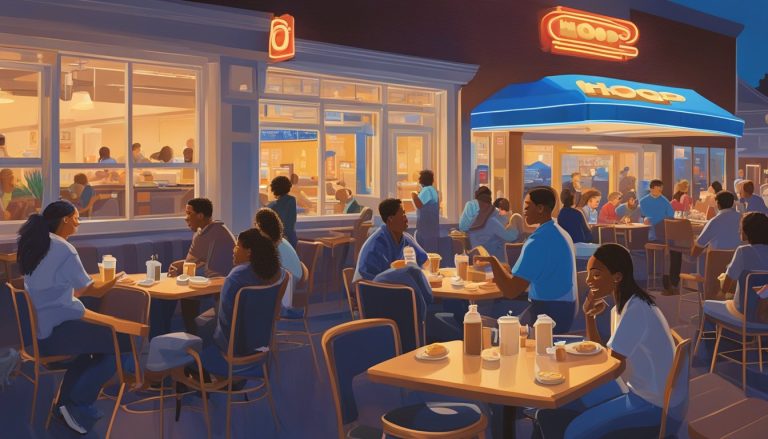IHOP, the International House of Pancakes, has become synonymous with breakfast in America and beyond. Founded in 1958, this iconic chain has grown into a global powerhouse with over 1,750 locations across multiple countries. IHOP’s franchise model has been instrumental in its expansion, offering entrepreneurs the opportunity to operate under a recognized brand with a proven business model.
The IHOP franchise system provides franchisees with a comprehensive package that includes established unit economics, adaptable formats, and local market relevance. Franchisees benefit from IHOP’s strong brand awareness, diverse menu offerings, and reputation for serving the “best pancakes in the business.” This powerful combination has allowed IHOP to maintain its position as a leader in the family dining category.
IHOP’s franchise agreements typically span 20 years, giving franchisees ample time to build and grow their businesses. The company’s success in the breakfast segment has been bolstered by its ability to adapt to changing consumer preferences while maintaining its core identity. This flexibility, combined with IHOP’s strong support system for franchisees, has created a recipe for success in the competitive restaurant industry.
History and Evolution of IHOP
IHOP’s journey from a single restaurant to a global breakfast empire spans over six decades. The company’s growth strategy and business model have evolved significantly since its founding.
From Toluca Lake to an American Icon
International House of Pancakes opened its first restaurant in Toluca Lake, California in 1958. The founders, Al and Jerry Lapin, envisioned a place specializing in pancakes and other breakfast foods. Their concept quickly gained popularity, leading to rapid expansion across the United States.
In 1973, IHOP introduced its now-famous acronym, which became widely recognized by customers. The company’s growth continued steadily through franchising. By the 1980s, IHOP had established itself as a household name in American dining.
IHOP adopted a traditional franchise business model in 2003, focusing on selling restaurants to franchisees. This shift allowed for faster expansion and reduced capital requirements for the parent company.
Dine Brands: Establishing a Breakfast Monopoly
In 2007, IHOP made a bold move by acquiring Applebee’s for $2.1 billion. This acquisition led to the formation of Dine Brands Global, creating a powerful entity in the casual dining sector.
The merger allowed IHOP to leverage synergies between the two brands and expand its market presence. Dine Brands’ strategy focused on growing both chains while maintaining their distinct identities.
By 2025, IHOP has over 1,700 locations worldwide. The company continues to innovate its menu and restaurant designs while staying true to its breakfast-centric roots. IHOP’s success demonstrates the enduring appeal of its concept and the effectiveness of its franchise model.
The Business of Breakfast
IHOP has built its empire on America’s love for breakfast foods. The company’s success stems from its focus on morning fare, diverse menu offerings, and ability to adapt in a competitive market.
Rise of the Breakfast Sector
The breakfast sector has experienced significant growth in recent years. Consumers increasingly view breakfast as an all-day option, not just a morning meal. This shift has benefited chains like IHOP that specialize in breakfast items.
IHOP capitalized on this trend by expanding its hours and promoting breakfast at any time. The chain’s signature pancakes remain a top draw, but items like omelets and French toast also attract diners throughout the day.
Coffee plays a crucial role in IHOP’s breakfast business. The restaurant offers a variety of coffee drinks to complement its food menu, recognizing that many customers view coffee as an essential part of their breakfast experience.
Competing in a Crowded Market
IHOP faces stiff competition in the breakfast space from other chains and local diners. To stand out, the company focuses on its core strengths: pancakes and all-day breakfast availability.
The chain differentiates itself through promotions like free pancake days and seasonal menu items. These strategies help maintain customer interest and drive foot traffic to restaurants.
IHOP also adapts its offerings to local tastes and preferences. This flexibility allows the chain to compete effectively in diverse markets across the United States and internationally.
Menu Innovation and Variety
Menu variety is a key component of IHOP’s business strategy. While pancakes remain the star, the chain continually introduces new items to keep customers engaged.
Recent innovations include:
- Protein-packed options for health-conscious diners
- International flavors to appeal to diverse tastes
- Customizable meals allowing customers to mix and match items
IHOP also updates classic dishes like waffles and French toast with new flavors and toppings. This approach keeps the menu fresh while maintaining the comfort food appeal that defines the brand.
The chain’s ability to balance traditional breakfast fare with innovative options helps it attract both loyal customers and new diners seeking variety.
Franchise Model Explained

The IHOP franchise model offers entrepreneurs a proven system to operate successful breakfast restaurants. It involves specific steps, contractual agreements, and ongoing financial obligations between the franchisor and franchisee.
Becoming a Franchisee: Steps and Requirements
To become an IHOP franchisee, candidates must meet certain criteria. A minimum net worth of $1.5 million and liquid assets of $500,000 are typically required. The application process includes:
- Initial inquiry
- Qualification review
- Interview with franchise development team
- Financial verification
- Site selection
- Training program completion
Successful applicants gain access to IHOP’s established brand, operating systems, and support network. Experience in restaurant management is preferred but not always mandatory.
Understanding the Franchise Agreement
The IHOP Franchise Agreement outlines the rights and responsibilities of both parties. Key components include:
- Initial term: Usually 20 years
- Territory rights
- Use of trademarks and proprietary systems
- Operational standards and compliance requirements
- Renewal options
Franchisees must adhere to IHOP’s quality standards and operational procedures. The agreement also covers dispute resolution mechanisms and termination conditions.
Royalty Fee Structure and Advertising Fee
IHOP franchisees are subject to ongoing fees:
Royalty Fee:
- Typically 4.5% of gross sales
- Paid weekly or monthly
Advertising Fee:
- Usually 3.5% of gross sales
- Contributes to national and local marketing efforts
These fees support brand-wide initiatives and ongoing franchise support. Additional costs may include local marketing expenses and technology fees. Franchisees should factor these recurring expenses into their business plans to ensure profitability.
Support and Training for Franchisees
IHOP provides comprehensive training and ongoing support to help franchisees succeed. The company offers programs to equip new owners with essential skills and resources for running their restaurants effectively.
Initial Restaurant Training Program
IHOP’s initial training program is designed to prepare franchisees for all aspects of restaurant operations. New owners attend an intensive multi-week course at IHOP University, covering topics like food preparation, customer service, and management techniques.
The curriculum includes hands-on kitchen training, allowing franchisees to master IHOP’s signature recipes and cooking methods. Participants also learn about inventory management, staff scheduling, and financial reporting.
IHOP provides guidance on hiring and training staff, helping franchisees build strong teams. The program covers marketing strategies and local promotional tactics to attract customers and boost sales.
Ongoing Support and Resources
IHOP offers continuous assistance to franchisees after their restaurants open. The company provides regular operational reviews and performance evaluations to identify areas for improvement.
Franchisees have access to a network of field consultants who offer personalized advice and troubleshooting. These experts can help with menu updates, equipment maintenance, and implementing new company initiatives.
IHOP supplies franchisees with marketing materials and promotional campaigns to drive traffic. The company’s research and development team works on menu innovations, keeping the offerings fresh and appealing.
Owners can participate in regional meetings and annual conventions to network with other franchisees and learn industry best practices. IHOP also offers advanced training courses for experienced operators looking to enhance their skills.
Marketing and Brand Presence
IHOP’s marketing strategies have propelled it to become a household name in the breakfast restaurant industry. The company’s approach combines brand recognition, data-driven expansion, and targeted advertising to maintain its position as a leader in the market.
Building a Recognized Brand
IHOP has cultivated a strong brand identity centered around its signature pancakes and family-friendly atmosphere. The company’s logo, featuring a smiling face within the “O,” has become instantly recognizable. IHOP’s consistent use of blue and white colors across its restaurants and marketing materials reinforces brand recall.
To maintain relevance, IHOP regularly updates its menu with seasonal offerings and limited-time promotions. These initiatives generate buzz and encourage repeat visits from customers. The brand also leverages social media platforms to engage with its audience, sharing appetizing food photos and responding to customer feedback.
Leveraging Market Research for Expansion
IHOP utilizes comprehensive market research to guide its expansion strategies. The company analyzes demographic data, consumer preferences, and local competition before selecting new franchise locations. This approach helps ensure each new restaurant has a high likelihood of success.
The franchise also conducts regular customer surveys to gather feedback on menu items, service quality, and overall dining experience. This data informs menu updates and operational improvements across the IHOP network. By staying attuned to customer needs, IHOP maintains its competitive edge in the crowded restaurant market.
Advertising Initiatives and Customer Reach
IHOP employs a multi-faceted advertising approach to reach its diverse customer base. The company allocates a portion of its franchise fees towards national advertising campaigns, ensuring consistent brand messaging across all markets. These campaigns often feature mouth-watering visuals of IHOP’s signature dishes to entice viewers.
Local franchisees supplement national efforts with targeted regional advertising. This may include radio spots, local print ads, and community event sponsorships. IHOP also embraces digital marketing, using search engine optimization and targeted social media ads to reach potential customers online.
The brand’s loyalty program, MyHOP, rewards frequent diners with points and exclusive offers. This initiative not only encourages repeat visits but also provides valuable data on customer preferences and dining habits.
Expanding the Customer Experience

IHOP focuses on enhancing its offerings to attract and retain a broader customer base. The franchise model emphasizes menu variety, technological integration, and a welcoming atmosphere to appeal to diverse demographics.
Broadening the Menu Beyond Breakfast
IHOP has expanded its menu to include lunch and dinner options. The franchise now offers a range of salads, sandwiches, and entrees to cater to different meal preferences throughout the day. This strategy aims to increase customer visits beyond traditional breakfast hours.
Popular additions include grilled chicken salads, hearty burgers, and savory pasta dishes. The expanded menu allows IHOP to compete with casual dining restaurants while maintaining its breakfast specialty.
Integrating Technology with Online Ordering
IHOP has embraced digital solutions to enhance customer convenience. The franchise implemented online ordering systems and mobile apps to streamline the ordering process. These platforms allow customers to browse menus, place orders, and schedule pickup or delivery times.
Digital integration also enables IHOP to collect valuable customer data. This information helps the franchise tailor promotions and improve service based on individual preferences and ordering habits.
Creating a Family Dining Atmosphere
IHOP positions itself as a family-friendly restaurant chain. The franchise designs its locations with spacious seating arrangements and a welcoming ambiance. Many IHOP restaurants feature booth seating and tables that accommodate larger groups.
The menu includes options for children, with kid-sized portions and fun meal presentations. IHOP also offers family meal deals and promotions to encourage group dining experiences. This approach helps establish IHOP as a go-to destination for family outings and celebrations.
Financial Aspects and Growth Strategy
IHOP’s franchise model has proven successful, with steady growth and revenue increases over the years. The company’s financial health and franchise profitability metrics provide insights into its expansion strategy and market position.
Analyzing the Financial Health of IHOP
IHOP’s parent company, Dine Brands Global, trades on the NASDAQ under the ticker DIN. In 2024, IHOP reported median gross sales of $2,054,304 per franchise location, a 4% increase from the previous year. The company’s strong brand recognition and diverse menu offerings contribute to its financial stability.
IHOP’s royalty fees range from 4.5% to 4.75% of gross sales, providing a steady income stream for the parent company. The initial franchise fee is $50,000, with a total investment ranging from $1.5 million to $3 million, depending on location and restaurant size.
Franchise Profitability and Growth Metrics
IHOP franchises have shown consistent profitability, with average net profits ranging from 8% to 12% of gross sales. The company’s popularity as a breakfast destination has helped maintain steady customer traffic and sales volumes.
Franchise growth metrics indicate a positive trend:
- Annual unit growth: 2-3%
- Same-store sales growth: 3-4% annually
- Average unit volume: $2.1 million
IHOP’s expansion strategy focuses on both domestic and international markets. The company plans to open 80-100 new locations annually, targeting underserved areas and exploring non-traditional venues like airports and college campuses to capitalize on its franchise opportunity.




